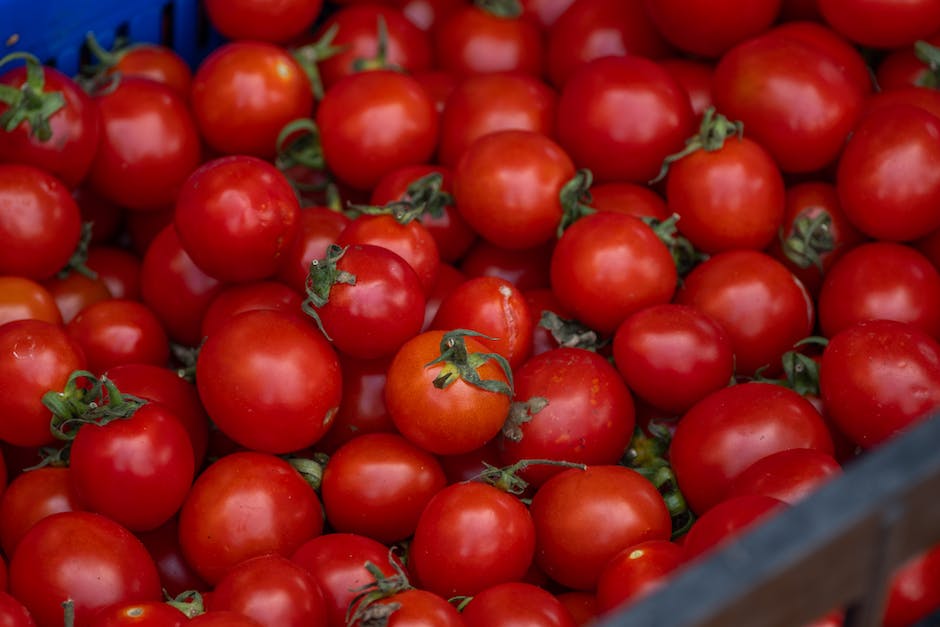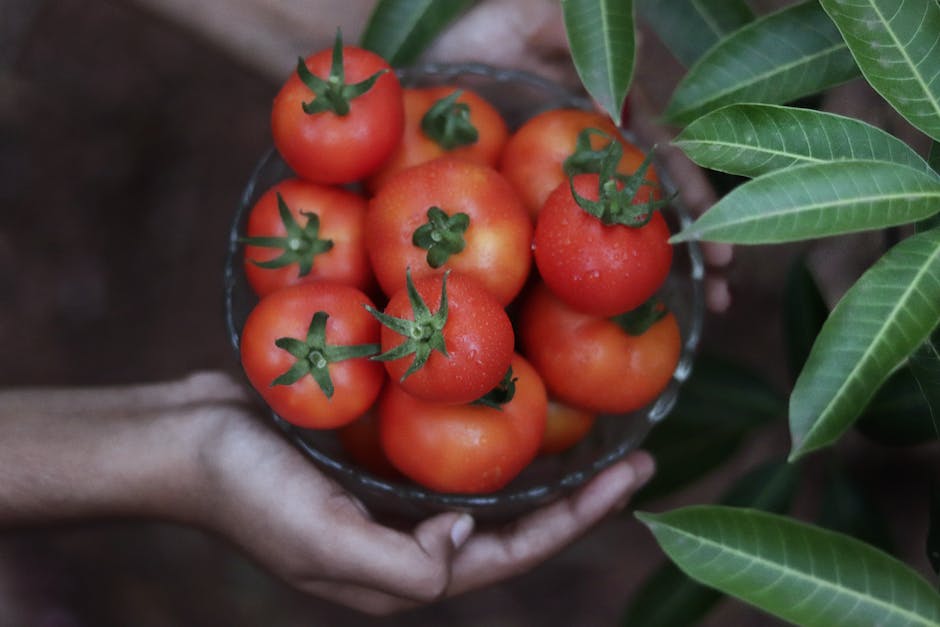How Are Hydroponic Tomatoes Grow
Hydroponics is a modern and innovative method of growing plants that has gained significant popularity in recent years. This system allows us to cultivate a variety of crops, including the humble tomato, in a controlled environment without the need for soil. Instead, plants are grown in a nutrient-rich water solution, providing all the necessary elements for healthy growth.
One of the primary advantages of hydroponic tomato cultivation is the ability to optimize the growing conditions for these plants. Environmental factors such as temperature, humidity, and lighting can be carefully monitored and adjusted to create an ideal setting for tomato plants. This level of control not only ensures consistent and prolific growth but also minimizes the risks associated with traditional soil-based farming, such as pests, diseases, and adverse weather conditions.
The hydroponic system takes advantage of various techniques to provide the necessary nutrients to the tomato plants. Nutrient solutions are prepared using a precise combination of essential elements such as nitrogen, phosphorus, potassium, and trace minerals. These solutions are then delivered directly to the plant’s root system, allowing for efficient nutrient absorption and utilization. In turn, this results in healthier and more vigorous tomato plants, leading to higher yields and superior fruit quality.
Another aspect that makes hydroponics an attractive option for tomato production is its superior water efficiency. The recirculating nature of the hydroponic system means that water usage is significantly reduced compared to conventional farming methods. This is especially crucial in regions where water scarcity is a concern, as hydroponics allows for the conservation of this valuable resource without compromising on crop productivity.
Moreover, hydroponic tomato cultivation offers the advantage of year-round production regardless of the external climate or season. With a carefully designed indoor setup, tomatoes can be cultivated even in areas with harsh winters or limited sunlight. This provides businesses with the opportunity to meet market demands consistently and enhances food security by reducing dependence on seasonal fluctuations.
In conclusion, hydroponics has revolutionized the way we grow tomatoes, offering numerous benefits over traditional soil-based methods. The ability to optimize growing conditions, precise nutrient control, water efficiency, and year-round production are all key advantages of this innovative approach. As demand for quality produce continues to rise, hydroponic tomato cultivation presents a professional and sustainable solution for businesses looking to meet these demands while ensuring consistent and superior crop yields.
Definition and explanation of hydroponic tomato cultivation (2)

Hydroponic tomato cultivation is a method of growing tomatoes without the use of soil. Instead, it involves growing the plants in a nutrient-rich water solution, providing them with all the necessary elements required for healthy growth. This technique has gained popularity in recent years due to its numerous advantages.
One of the key benefits of hydroponic tomato cultivation is its ability to maximize space utilization. Unlike traditional soil-based farming, hydroponic systems can be designed to fit any available space, whether it’s a small patio or a large greenhouse. This makes it an ideal option for urban areas where land is limited. By utilizing vertical growing systems or stacked trays, hydroponic farmers can grow a larger number of tomato plants in a smaller area.
Another advantage of hydroponic tomato cultivation is the precise control over the plants’ nutrient intake. With soil-based farming, it can be challenging to ensure that plants receive the right balance of nutrients. In hydroponic systems, the nutrient solution is carefully measured and adjusted to meet the plant’s specific needs. This allows for optimal growth and the production of high-quality tomatoes.
Furthermore, hydroponic tomato cultivation eliminates the risk of soil-borne diseases and pests that can hinder traditional farming methods. The absence of soil also reduces the need for pesticides and herbicides, resulting in healthier, safer produce. Additionally, hydroponics reduces water consumption as the nutrient solution is recirculated within the system, minimizing wastage.
The process of hydroponic tomato cultivation involves using various techniques such as deep water culture, nutrient film technique, or drip irrigation systems. Depending on the chosen method, the plants’ root systems are either immersed in a nutrient solution or exposed to a thin film of the solution flowing beneath them. This constant supply of water and nutrients ensures the plants’ optimal growth and development.
In conclusion, hydroponic tomato cultivation is a modern and innovative method of growing tomatoes. It offers numerous advantages such as space maximization, precise nutrient control, disease and pest prevention, and reduced water consumption. As the world faces various environmental and agricultural challenges, hydroponics presents itself as a sustainable solution for producing fresh, high-quality tomatoes year-round.
The different types of hydroponic systems used for growing tomatoes, such as nutrient film technique (NFT) and deep water culture (DWC) (3)

Hydroponic cultivation methods have revolutionized the way tomatoes are grown, providing an efficient and sustainable approach to agriculture. Among the various hydroponic systems used for tomato cultivation, the Nutrient Film Technique (NFT) and Deep Water Culture (DWC) have gained significant popularity due to their effectiveness and reliability.
The Nutrient Film Technique (NFT) is a widely used hydroponic system for growing tomatoes. In this system, plants are placed in channels or gutters with a continuous flow of nutrient-rich water running over the bare roots. The slightly inclined channels allow a thin film of nutrient solution to flow over the roots, supplying the necessary water, oxygen, and nutrients. Any excess water is collected and recirculated, minimizing water wastage. NFT systems are highly efficient, allowing for optimal nutrient absorption and oxygenation of the roots, resulting in healthy and robust tomato plants.
Deep Water Culture (DWC) is another popular hydroponic system utilized for tomato cultivation. This system involves suspending the tomato plants in a nutrient solution, with the roots completely submerged in the water. Air stones or diffusers are used to provide oxygen to the roots, ensuring proper aeration. DWC systems are known for their simplicity and low maintenance requirements, making them an attractive choice for both commercial and home growers. The constant contact with the nutrient-rich solution promotes vigorous root development and rapid growth, leading to high-quality tomatoes.
While NFT and DWC are among the most widely used hydroponic systems for growing tomatoes, there are other methods available as well, including aeroponics, drip irrigation, and ebb and flow systems. Each system has its advantages and challenges, but what remains constant is the ability of hydroponics to optimize plant growth by providing precise control over nutrient intake, water supply, and environmental conditions.
In conclusion, hydroponic systems offer an innovative and efficient approach to growing tomatoes. The Nutrient Film Technique (NFT) and Deep Water Culture (DWC) are two popular hydroponic methods that ensure optimal nutrient absorption, oxygenation of roots, and robust plant growth. Whether you opt for NFT, DWC, or any other hydroponic system, harnessing this technology can significantly increase tomato yields while conserving resources and maintaining sustainability in agriculture.
Choosing the right tomato variety for hydroponic cultivation and their characteristics (4)

When it comes to growing tomatoes hydroponically, choosing the right variety is crucial for the success of your cultivation. Not all tomato varieties are well-suited for hydroponic systems, as the conditions and requirements differ from traditional soil-based cultivation. In this section, we will explore four tomato varieties that are ideal for hydroponic cultivation and discuss their unique characteristics.
1. Beefsteak: Beefsteak tomatoes are a popular choice for hydroponic growers due to their large size and juicy, flavorful flesh. These varieties produce hefty, meaty fruits that are perfect for slicing onto sandwiches or using in salads. Beefsteak tomatoes thrive in hydroponic systems, thanks to their vigorous growth and resistance to common diseases. They require ample space, consistent nutrient supply, and support to bear the weight of their abundant fruits.
2. Cherry: Cherry tomatoes, with their small, bite-sized fruits, are well-suited for hydroponic cultivation. These varieties are known for their high yield potential, which makes them a favorite among small-scale hydroponic growers. Cherry tomatoes are generally quite disease-resistant and require minimal maintenance. Their ability to produce clusters of sweet, tangy fruits consistently throughout the growing season makes them an excellent choice for hydroponic systems.
3. Plum: Plum tomatoes, also known as Roma tomatoes, are another popular choice for hydroponic cultivation. These varieties are characterized by their oblong shape and firm, dense flesh. Plum tomatoes are highly versatile and are often used in cooking, particularly for making sauces and pastes. They are known for their prolific fruit production and disease resistance, making them well-adapted to the controlled environment of hydroponic systems.
4. Heirloom: Heirloom tomatoes come in various shapes, sizes, and colors, offering a wide range of options for hydroponic growers. These non-hybrid varieties are cherished for their unique flavors and appearances. While heirloom tomatoes may require some extra attention and care in hydroponic systems, they can reward growers with exceptional taste and aesthetic appeal. With their diverse characteristics and heritage, heirloom tomatoes bring a touch of novelty and individuality to hydroponic gardens.
When selecting the right tomato variety for hydroponic cultivation, it’s essential to consider factors such as growth habit, disease resistance, yield potential, taste, and intended use. Each of the four varieties discussed above offers distinct advantages for hydroponic growers, allowing you to choose the perfect tomatoes for your specific goals and preferences. By investing in the right tomato varieties and providing them with the appropriate care, you can enjoy a successful hydroponic tomato harvest that is both flavorful and abundant.
Preparation of the nutrient solution required for hydroponic tomato growth (5)

Hydroponic tomato cultivation is a fascinating method that allows tomatoes to grow without the use of soil. Instead, nutrient-rich water solutions are used to deliver essential minerals and nutrients directly to the plant’s roots. The preparation of the nutrient solution is a crucial step in ensuring healthy and vigorous growth of hydroponic tomatoes.
To begin, it is essential to understand the nutrient requirements of tomato plants in order to create a well-balanced solution. Tomatoes require various macronutrients, including nitrogen (N), phosphorus (P), and potassium (K), as well as a range of micronutrients such as calcium (Ca), magnesium (Mg), and iron (Fe).
One common approach to preparing the nutrient solution is using commercial hydroponic nutrient mixes. These mixes are readily available and formulated to provide the necessary nutrients in the correct proportions. Manufacturers often provide instructions or guidelines on how to mix their products, which simplifies the process for beginners.
For those who prefer a more hands-on approach or want to tailor the nutrient solution to specific needs, custom formulations can be created. This involves sourcing individual nutrient salts and carefully calculating the correct ratios for optimal growth. Each nutrient salt needs to be dissolved in water separately and then combined following the desired proportions.
It is crucial to use high-quality water for preparing the nutrient solution. Tap water can contain impurities, such as excessive chlorine or heavy metals, which can be harmful to the plants. In such cases, using filtered or distilled water is recommended to ensure a clean and pure solution.
Before adding the nutrient salts to the water, pH levels should be adjusted to the optimal range for tomato plants, which is typically between 5.5 and 6.5. Maintaining the correct pH level is important, as it influences nutrient availability and absorption by the roots. pH adjustment can be done using pH-up or pH-down solutions, which are available commercially.
Once the pH is adjusted, the nutrient salts can be added gradually, ensuring they dissolve completely into the water. It is advised to follow the manufacturer’s instructions or consult a hydroponic expert to determine the proper amount of each nutrient salt required. After mixing, the nutrient solution should be thoroughly stirred or circulated to ensure uniform distribution.
Regular monitoring of the nutrient solution is essential to maintain optimal plant health. It is recommended to measure the electrical conductivity (EC) and pH levels of the solution regularly using a digital meter. Adjustments may be necessary over time to account for nutrient uptake by the plants and pH fluctuations.
In conclusion, the preparation of the nutrient solution is a crucial aspect of successful hydroponic tomato cultivation. Whether using commercial mixes or creating a custom formulation, it is important to consider the specific nutrient requirements of tomato plants. Proper pH adjustment and regular monitoring of the nutrient solution will help ensure healthy growth and abundant harvests of hydroponic tomatoes.
The ideal conditions for hydroponic tomato cultivation, including temperature, humidity, and lighting requirements (6)

Hydroponic tomato cultivation requires specific conditions to ensure optimal growth and yield. By creating the ideal environment, growers can maximize the potential of their hydroponic systems. In this section, we will explore the temperature, humidity, and lighting requirements for successful hydroponic tomato production.
1. Temperature: Maintaining the right temperature is crucial for hydroponic tomato plants. The ideal range for daytime temperatures is between 70°F (21°C) and 75°F (24°C). During nighttime, the temperature should slightly drop to around 65°F (18°C) to provide the plants with a rest period. Fluctuations beyond these ranges can negatively affect plant growth and fruit development. To ensure consistent temperature levels, consider using temperature control devices or greenhouse automation systems.
2. Humidity: Proper humidity levels are vital for hydroponic tomatoes to thrive. While the desired humidity range may vary slightly during different growth stages, overall, a relative humidity (RH) level between 50% and 70% is recommended. High humidity can lead to increased incidence of diseases, such as powdery mildew, so adequate ventilation and air circulation are important. Monitoring and controlling humidity levels in the hydroponic environment contribute to healthier plants.
3. Lighting: Light plays a pivotal role in the growth and development of hydroponic tomato plants, as they require a substantial amount of daily light to simulate natural sunlight. Providing the right intensity and duration of light is crucial. For optimal growth, tomatoes generally require around 14-16 hours of light daily. High-intensity discharge (HID) lamps, such as metal halide (MH) or high-pressure sodium (HPS) bulbs, are commonly used to provide the necessary light spectrum for hydroponic tomato plants. LED grow lights have also gained popularity for their energy efficiency and customizable light spectrum.
Along with temperature, humidity, and lighting requirements, it’s important to maintain proper nutrient levels, pH balance, and oxygenation in the hydroponic system. Monitoring the plant’s progress and making necessary adjustments will ensure a successful hydroponic tomato harvest. By providing the ideal conditions, you can cultivate healthy, flavorful tomatoes throughout the year, making hydroponic gardening a viable option for tomato enthusiasts and commercial growers alike.
The importance of proper ventilation and air circulation in hydroponic systems for tomatoes (7)

Proper ventilation and air circulation play a crucial role in hydroponic systems for growing tomatoes. As hydroponics involves growing plants in a soil-less medium, it becomes even more essential to create an environment that mimics natural conditions to ensure optimal plant growth and development.
One of the main reasons why ventilation is important in hydroponic systems is to reduce the risk of disease and pests. In a closed environment like a greenhouse or indoor facility, the lack of fresh air circulation can create a breeding ground for pathogens and insects. These can easily spread and cause serious damage to the tomato plants.
Ventilation helps to control the temperature and humidity levels within the hydroponic system. Tomatoes thrive in certain temperature ranges, and proper air circulation ensures that the plants are not exposed to extreme heat or cold. Additionally, adequate ventilation helps to prevent the formation of excess moisture, which can lead to the development of fungal diseases.
Moreover, proper air circulation can promote the efficient exchange of carbon dioxide (CO2) and oxygen (O2) within the hydroponic system. Carbon dioxide is vital for photosynthesis, the process by which plants convert light energy into chemical energy. Increased air circulation helps to disperse CO2 evenly around the plants, allowing them to maximize their growth potential. At the same time, it facilitates the release of oxygen produced during photosynthesis.
To achieve optimal ventilation and air circulation in hydroponic systems, growers can adopt various strategies. One common method is the use of fans to create airflow throughout the growing area. These fans can be strategically positioned to ensure that there are no stagnant areas where air can become trapped.
In addition to fans, other ventilation equipment such as vents and exhaust systems can be utilized to facilitate the exchange of air with the outside environment. This ensures a consistent supply of fresh air while expelling excess heat and moisture from the hydroponic system.
Regular monitoring of temperature, humidity, and CO2 levels is crucial for maintaining the ideal growing conditions for tomatoes. Growers must also be mindful of the size and layout of their hydroponic system, ensuring that there is sufficient space for the air to circulate freely around the plants.
By prioritizing proper ventilation and air circulation in hydroponic systems for tomatoes, growers can create an environment that fosters healthy plant growth and maximum yields. This ultimately leads to the production of high-quality, flavorful tomatoes that meet the demands of the market.
Techniques for planting hydroponic tomato seedlings or transferring young plants into the system (8)

Hydroponic farming has gained considerable popularity in recent years due to its efficiency and ability to produce high-quality crops. When it comes to growing hydroponic tomatoes, the techniques for planting seedlings or transferring young plants into the system play a crucial role in ensuring a successful harvest.
1. Preparing the Seedlings:
Before transferring the tomato seedlings into the hydroponic system, it is essential to ensure they are healthy and well-nourished. This can be achieved by starting with high-quality seeds and providing them with optimal growing conditions. Use a sterile seed-starting mix and maintain a controlled environment with consistent temperatures and lighting to encourage strong and robust seedling growth.
2. Seedling Selection:
For hydroponic tomato cultivation, choose seedlings that exhibit strong root development and healthy foliage. Ideally, select seedlings that have achieved a height of around 5-6 inches and possess several sets of true leaves. By choosing well-established seedlings, you increase the chances of successful transplanting and subsequent growth in the hydroponic environment.
3. Transplanting Techniques:
There are various methods for transferring young tomato plants into a hydroponic system. One common approach is to use net pots filled with a sterile growing medium, such as perlite or coco coir. Gently remove the seedlings from their original containers, taking care not to damage the delicate root system. Place the seedling into the net pot, ensuring the roots are adequately covered by the growing medium, and lightly firm the medium around the roots to provide stability.
4. Nutrient Solution Adjustment:
After transplanting the tomato seedlings, it is crucial to monitor the nutrient solution and make any necessary adjustments to support optimal growth. Hydroponic systems rely on a carefully balanced nutrient solution that provides all essential macronutrients, micronutrients, and trace elements required for plant growth. Regularly test and adjust the pH and nutrient levels to ensure they remain within the ideal range for tomato cultivation.
5. Transitioning to the Hydroponic Environment:
To help the tomato seedlings adapt to the hydroponic system, it’s recommended to gradually introduce them to the new environment. Initially, expose the seedlings to shorter periods of hydroponic solution immersion, gradually increasing the duration over several days. This gradual transition allows the plants to adjust to the different watering method and prevents shock.
6. Post-Transplant Care:
Once the tomato seedlings are securely transplanted into the hydroponic system, proper care is vital for their continued growth and development. Maintain a consistent and controlled environment with appropriate lighting, temperature, and humidity levels. Regularly monitor the nutrient solution’s composition and adjust as needed to provide optimal nutrition. Regularly inspect the plants for signs of pests or diseases and promptly address any issues to prevent further damage.
By employing these techniques for planting hydroponic tomato seedlings or transferring young plants into the system, you can set the stage for a successful and bountiful tomato harvest. Remember to pay careful attention to seedling selection, transplanting techniques, nutrient solution management, and post-transplant care to maximize the growth potential of your hydroponic tomatoes.
Maintenance, care, and monitoring of hydroponic tomatoes, including pruning, trellising, pest control, and disease prevention (9)

Maintaining, caring for, and monitoring hydroponic tomatoes are crucial aspects of ensuring a successful and bountiful harvest. In this section, we will explore some key practices to follow for optimal growth, including pruning, trellising, pest control, and disease prevention.
1. Pruning: Regular pruning is essential for hydroponic tomato plants to maintain their shape, encourage airflow, and promote fruit development. Use clean and sterilized shears to remove any yellowing or diseased leaves, as well as any side shoots growing between the main stem and leaf branches. Focus on creating a single stem by removing all side shoots, except for the ones that will be trained as fruit-bearing branches.
2. Trellising: Providing proper support to tomato plants is vital to prevent them from becoming overcrowded and tangled. Install a sturdy trellis system in your hydroponic setup to keep the plants upright as they grow taller. Gently tie the main stem to the trellis using soft plant ties or clips, ensuring that it has room to expand. As the plant continues to grow, loosely secure the fruit-bearing branches to the trellis to prevent them from drooping under the weight of the developing tomatoes.
3. Pest Control: With hydroponic systems offering a controlled environment, the occurrence of pests is usually minimal. However, it’s important to remain vigilant and regularly inspect your plants for any signs of infestation. Integrated Pest Management (IPM) techniques, such as introducing beneficial insects like ladybugs or using organic insecticidal soaps, can help control common pests like aphids, whiteflies, or spider mites. Use sticky traps placed strategically throughout the growing area to catch flying insects and monitor their population levels.
4. Disease Prevention: Diseases can pose a significant threat to hydroponic tomato plants, but with proper care, you can minimize the risk. Firstly, ensure good ventilation within your growing area to discourage the development of humid conditions that may favor fungal diseases. Additionally, practice good hygiene by regularly disinfecting your hydroponic system and tools, as well as removing any decaying plant matter promptly. Consider using disease-resistant varieties of tomatoes whenever possible, as they offer increased resistance to some common diseases such as powdery mildew or blight.
By following these maintenance, care, and monitoring practices for your hydroponic tomatoes, you can ensure healthy and productive plants. Regularly assess your plants’ needs, adjust your nutrient solution accordingly, and keep a close eye on their overall growth and development. With dedication and attention to detail, you’ll be rewarded with delicious and high-quality hydroponic tomatoes.

